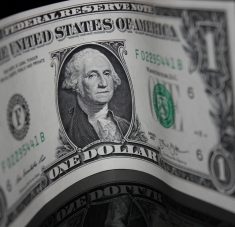
There might be affiliate links in this post. If you click on a link and make a purchase, I receive a small commission. Read my disclosure policy here.
This may sound strange coming from a Certified Financial Planner,
but the truth is, investing should not be your first priority if you want to be financial successful.
Don’t get me wrong, investing is very important.
And without putting money aside for your future and investing it wisely, it may be difficult to have a bright financial future.
But before even thinking about investing, you have to get in front of your spending. Specifically, you need to know what you spend on average each month.
Why is that?
I’ll explain. . .
The Secret to Spending Greatness
Because if your spending is out of sync with your income, you’ll burn through your investments in no time – guaranteed. And if you spend your nest egg down, it doesn’t matter how good the investments were. In a very real way, one of the best ways to to protect your investments is to control your spending.
But how? There are dozens of software packages on the market that offer help in mastering your budget. Which one is best?
Well, for what I have in mind, none of them. Using software to track where each dollar goes is great when it comes to cutting your spending because it helps you identify spending habits that aren’t effective. But this micro-management doesn’t easily tell you if you need to change your spending. You have to look at the big picture (what you spend on average each month) to know that.
The good news is you can easily gain that perspective each month in less than 5 minutes and it won’t cost you a dime.
The Best Budget Tracker – Your Bank Statement
If you are like most people, almost all of your financial transactions go through your checking account.
Your checking account statement shows you:
-
Your total deposits (how much you earn).
-
You total withdrawals (how much you spent including credit card payments and cash withdrawals).
In other words, your bank statement is the hub of all things financial for most of us. And because your monthly banking statement summarizes this information, it’s super easy to figure out what you spend on average each month.
For example, let’s say your total withdrawals were $4355 last month. That $4355 covered all your bills, your auto payments, cash withdrawals and your credit cards. Everything. That’s what it cost you to live last month. See how easy that was?
Now keep in mind that some months are more expensive than others. That’s because some bills come quarterly, semi-annually or annually. Also, at times we just spend more money than other times. That’s why it’s important to take a 12 month average in order to determine what you spend but that’s easy to do as well.
In order to calculate that average, simply pull out your last 12 monthly banking statements, add up all 12 totals from each statement and divide by 12. To see if you are going in the right direction or not, do this exercise each month to determine if the average is climbing or falling. If your spending is going in the wrong direction, use your budget tracking software to dig deeper and determine where the problem is and what you need to do to change the situation.
What About The Exceptions?
Your bank statement may not reflect all your spending. For example, if your credit card balance goes up it means you spent more but didn’t pay for it. I suggest you add that amount to your spending number for the month. Likewise, if you paid down debt and/or took money out of your checking account in order to invest, that money should be deducted from your spending number.
Along those same lines, if you had a very large expense such as buying a car, remodeling your home or buying an appliance or some furniture, those costs really can’t be associated with that one month or even one year. You can either hold those costs off to the side or if you want to get fancy you can spread them out over 5 or 10 years – depending on how long the asset or benefit will last.
This is a very simple exercise but it gives you a lot of very useful information. When you see what you spend on average it gives you a starting point to build your financial plan. Use this number to project what it will cost you to live when you retire. Do that and you’ll know how much you’ll need to accumulate before you can retire too.
My experience as a Certified Financial Planner over the last 20 years, tells me that knowing what you spend on average each month is the most vital financial information you can have. Most people haven’t got a clue and that’s a shame because it’s so easy to calculate.
Do you know what it costs you to live on average each month? If not, are you going to use this tool? If not, why not?
Neal Frankle is a Certified Financial Planner in Los Angeles. He is the chief editor for WealthPilgrim and co-founder of CreditPilgrim and MCMHA.
If you like this post, share it on social media. It’s the right thing to do.







